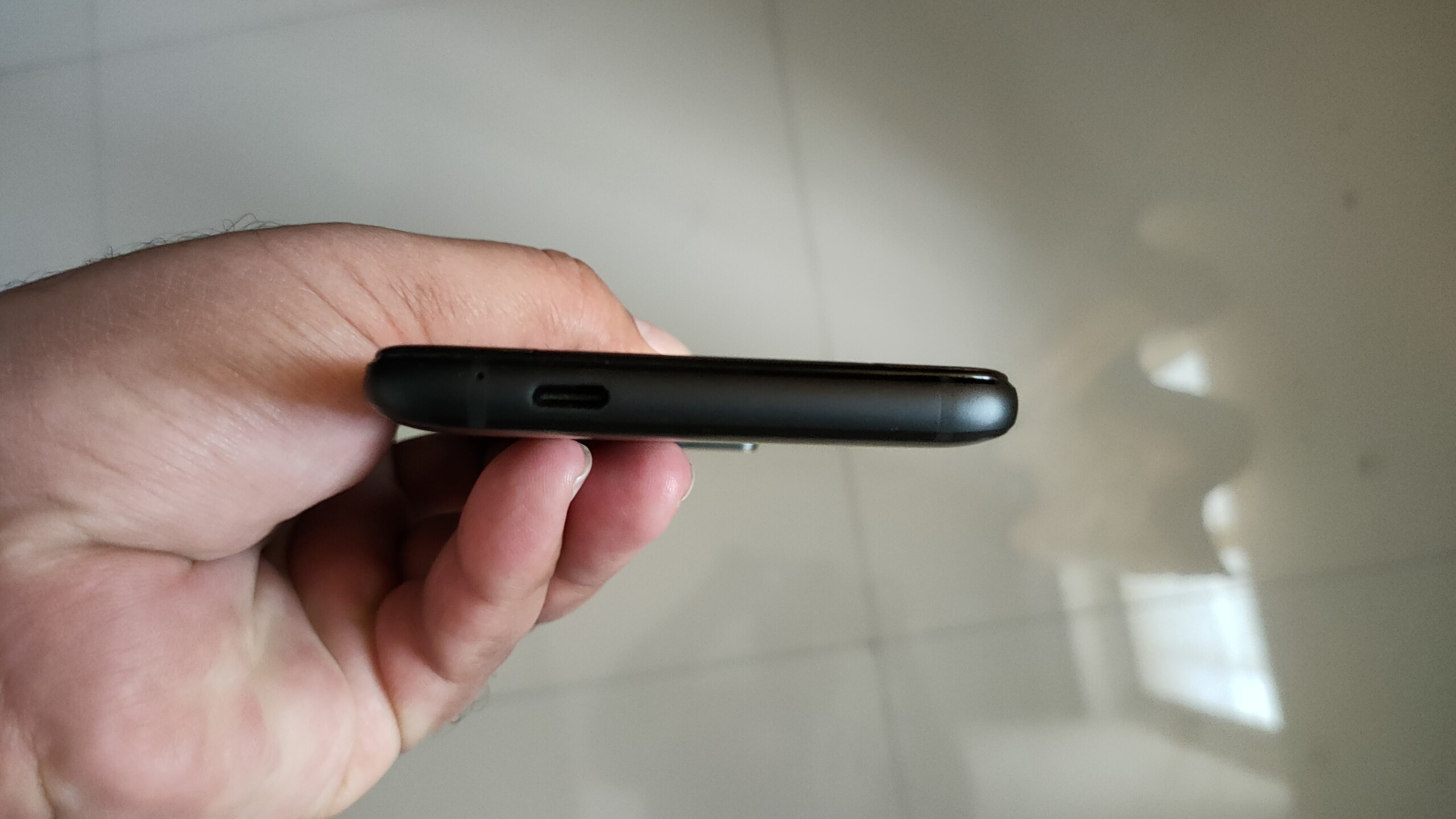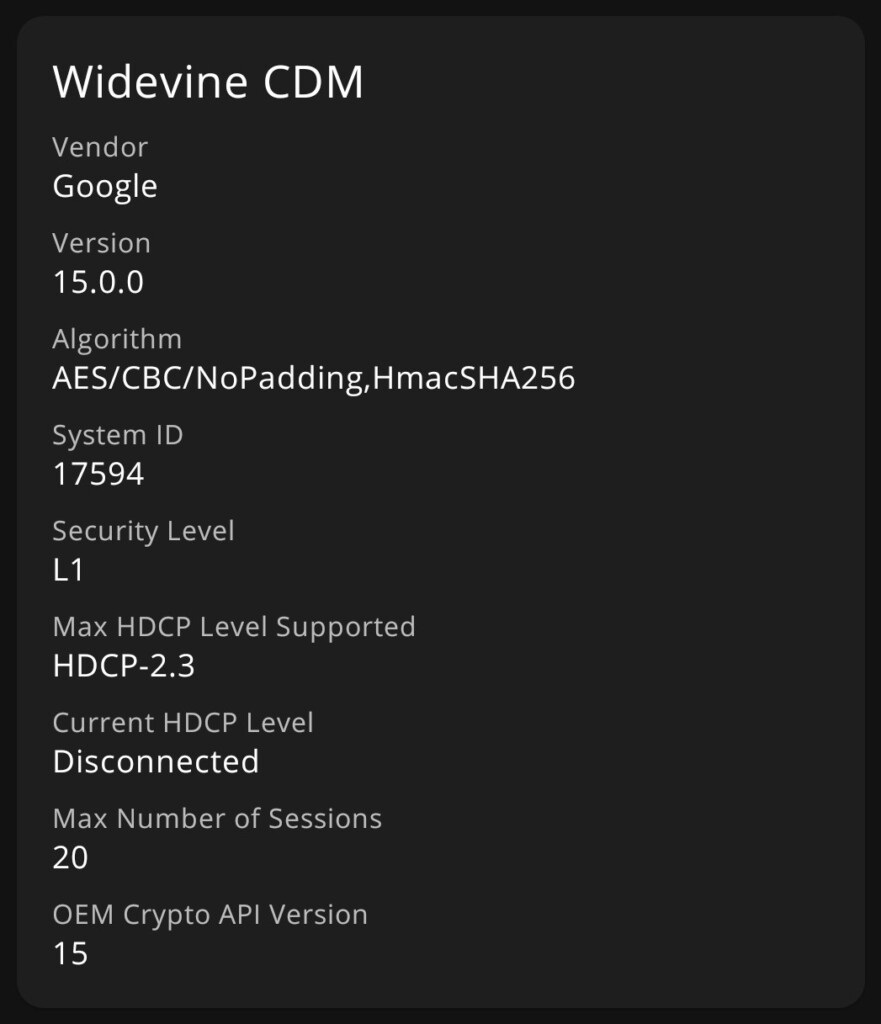
Asus ROG Phone 3 Review — A Flagship Gaming Smartphone That Continues to Top the Leaderboard
The Asus ZenFone 6 that we reviewed last year came across as an excellent flagship-killer device. Though we are still some time away from getting this year's ZenFone 7 on our hands, we did have the opportunity to take Asus's most savage offering this year for a test drive - the ROG Phone 3.
There have been several gaming-focused smartphone launches this year, including the Xiaomi Black Shark 3 Pro, ZTE Nubia Red Magic 5G, and even the Apple iPhone 11 series. However, Asus's latest ROG Phone 3 trumps them all in terms of both software and hardware while also offering a good accessory ecosystem.
On the first look, the ROG Phone 3 may not immediately seem very different from the last-gen ROG Phone 2. The core experience hasn't really changed much, to be honest. However, it is the more delicate refinements that Asus has incorporated keeping up with market trends that make the ROG Phone 3 a worthy successor.
In this review, we will look at some of those improvements and see what makes the ROG Phone 3 tick. Before we move on, here are some important specifications of the ROG Phone 3.
Do note that several variants of the ROG Phone 3 are available. The one we are reviewing is the Indian variant, which starts with 8 GB of RAM and 128 GB of storage and goes up to 12 GB RAM and 256 GB storage. International variants offer a choice between various combinations of the above RAM and storage capacities.
Design
As mentioned before, the ROG Phone 3 isn't radically different from the ROG Phone 2. Asus continues to use its predecessor's well-received gaming aesthetic, including the same dimensions and weight, with few changes to the overall design. The phone tips the scales at 240 g, but its dimensions ensure that the weight is well-distributed. Part of the reason for the heft is the enormous 6,000 mAH battery.
The front of the phone is pretty much identical to the ROG Phone 2. There are slight bezels on the top and bottom, but they don't necessarily interfere with the viewing experience. These bezels are needed to prevent accidental touches while gaming in landscape orientation. There is a large cut-out on the top bezel that houses the earpiece, which also doubles up as one of the stereo speakers. The top bezel also houses the front-facing camera, RGB notification LED, and one of the four microphones at the top left corner.
However, the real gamer aesthetic lies at the back of the device. True to its ROG spirit, the ROG Phone 3 includes the RGB ROG logo that can be configured for a variety of applications, including notifications, temperature sensing, per-game RGB controls, or can simply be turned off if you find it too distracting. The back also houses the triple-camera setup, which we will come to shortly.
Asus ROG Phone 3 - Back
At the right, we have the power button, volume rocker, and another microphone. While the right frame may seem relatively unassuming, it houses ultrasonic sensors collectively called AirTrigger 3 that offer advanced motion sensing and touch input, providing an edge in competitive mobile gaming.
Many of the presses, including squeeze functions, can be customized and mapped to specific actions that can be stored per-game.
Asus ROG Phone 3 - Right
On the left, we have the signature secondary USB Type-C port that ROG Phones have been featuring for a long time now. The unique feature here is that this is actually a dual Type-C port with connectors of different thicknesses. This USB 3.1 Gen2 port serves several functions:
- It allows for conveniently charging the phone while gaming in landscape orientation.
- It can output to a larger display, which can be an external monitor or even to any of the several accessories that Asus offers.
Asus ROG Phone 3 - Left
The bottom houses another microphone and a USB Type-C port with USB 2.0 transfer speeds. Both the left and bottom USB ports can be used along with Asus's bundled 30 W fast charger, while also doubling-up as audio pass-throughs for 3.5 mm headphones (Asus offers a USB-C to 3.5 mm adapter in the box).
Asus ROG Phone 3 - Bottom
UI Experience
Not so long ago, Asus had faced a lot of flak for heavy UI customization of the base Android OS leading to a somewhat bloated experience. Not any longer. Since the past couple generations of flagships, Asus has increasingly trimmed-down ZenUI to the point that it feels pretty-much relatable to the stock Android experience.
With the ROG Phone 3, users can choose between a near-stock Android 10 experience or the optional ROG-themed UI that should appeal to gamers. There is no bloatware installed apart from Facebook, Instagram, and Netflix, along with a few Asus apps such as Calculator, File Manager, and the likes. No matter what UI was chosen, we found the phone to be extremely responsive, and chances of it getting bogged down even in tough usage seemed next to impossible.
Asus Armory Crate
Enthusiast PC gamers will know how well Asus enables a lot of customization with its Armory Crate software. The company wants to provide a similar functionality for mobile gamers as well. The actual hardware apart, Armory Crate, is easily one of the highlights of the ROG Phone 3 experience. Armory Crate offers a lot of enthusiast gamer-centric features.
These include browsing through your installed game library, extensive customization options per game including the ability to adjust the display refresh rate, touch sensitivity, AirTrigger 3 sensitivity, RGB lighting effects, etc., system metrics such as CPU and GPU clocks and temperatures, available RAM and storage, battery life details, and much more.
And in true gamer fashion, you can also overclock your CPU and GPU with the flick of a switch. Although the ROG Phone 3 supports a 144 Hz AMOLED panel, not all games are capable of running at high refresh rates. Armory Crate provides an easy way to find and install games that support certain refresh rates, including 90 Hz, 120 Hz, and 144 Hz.
Asus said that it is tying-up with game engine developers such as Unity to help developers get easy access to the SDK that allows them to include support for the exclusive features of both the ROG Phone 2 and ROG Phone 3.
Display
The ROG Phone 3 sports a 6.59-inch FHD+ AMOLED display with a 19.5:9 aspect ratio that comes with Corning Gorilla Glass 6 protection. The screen is HDR10-certified and usually operates at a brightness of 650 nits, though it can also hit a 1000-nit peak brightness in certain conditions, making it perfect for true HDR content on the move. Do note that the actual brightness values may be lower in real-world usage.
In an era of smartphones with curved display edges, the ROG Phone 3 opts for a standard non-curve design, and this is a welcome step considering the phone's intended use case. As expected, the ROG Phone 3 is Widevine L1 certified, which should make watching videos on Netflix and Amazon Prime in FHD and above resolutions a piece of cake.
Asus ROG Phone 3 - Widevine CDM L1 support
The display supports a refresh rate of up to 144 Hz. Although it is theoretically possible to overclock the refresh rate up to 165 Hz, it involves fiddling with a few ADB commands to expose the option. With refresh rates, higher is always better, and while one would be interested in upping it to 165 Hz, do note that the feature is unfinished yet and may not really be stable, which can impact color calibration as well. You can also set the refresh rate to Auto and let the phone switch between various options depending on the viewed content.
Asus ROG Phone 3 - Refresh Rate Options
Speaking of color calibration, the display seems to well-calibrated out-of-the-box. Colors are punchy and black levels are excellent, which is to be expected from an advanced OLED panel. Still, Asus offers four color profile modes in Settings, along with an adjustment for color temperature. We found the best viewing experience in the Default color profile mode, though it is not necessarily color-accurate. If you are looking for a movie-focused experience, set the mode to Cinematic. Otherwise, you can opt for Standard, which enables a more balanced color space.
One important thing to note here is that Android, as an OS, is not yet cut out for high refresh rate displays. Most of the display optimizations that we see here are from Asus's side. As such, there are some limitations. While the phone allows for setting resolution and refresh rate independently, not all apps can effectively make use of it. Sure, Asus goes all out to enable high refresh rate gaming whenever possible, but regular apps such as browsers or IM clients may still run at 60 Hz. It is possible that a future update might allow refresh rate customization for apps, just like how it is possible with games.
Communications
The ROG Phone 3 offers all the communication features one would expect in a 2020 flagship device. The phone supports all global bands, including 5G sub-6 GHz. Dual-band Wi-Fi 6, Bluetooth 5.1, NFC, and all the GPS radios are fully enabled.
Call quality was excellent even on a regular network without VoLTE, and signal reception was good. We did not experience any call drops even while moving from an area with good connectivity to a relatively poor one. Audio, when routed to the speakerphone, is clear without any perceivable distortions. Note that while Asus offers a built-in call recorder, it may be disabled in certain countries depending on local laws.
We found the GPS to be quite accurate — it could track the user within a 3 meters accuracy outdoors. Indoor reception was not good, though. The phone did not exhibit any excessive warming during continuous GPS use, and neither did the battery drain seem prominent. This is good news for those navigating on battery.
Asus ROG Phone 3 - GPS Reception Outdoors
Performance
The Asus ROG Phone 3 is heralded as probably the most powerful Android device you can buy right now, and that is true for the most part. The phone sports the latest Qualcomm Snapdragon 865+ SoC, and it absolutely destroys the competition, no matter the benchmark.
CPU and GPU Performance
The Qualcomm Snapdragon 865+ offers a 10% higher boost clock on the Prime core than the Snapdragon 865, meaning this is one of the better bins that Qualcomm can offer. The Adreno 650 GPU receives a boost to 645 MHz compared to the original's 587 MHz. There's not much to say here apart from the fact that we achieved some of the highest scores we've ever seen so far on an Android flagship.
Asus ROG Phone 3 - Snapdragon 865+ SoC CPU-Z Info
In Geekbench 5.2, the ROG Phone scored 987 points in single-core and 3401 points in multi-core while scoring 3619 points in the benchmark's OpenCL Compute test. This Geekebench score is among the highest we've seen and is probably challenged only by the likes of the Apple iPhone 11 Pro.
Do note that the tests were run with X-mode off. X-Mode is a feature that ensures system resources are dedicated to demanding apps such as games and benchmarks. The difference in scores between X-Mode on and off was not much, as it was within the 3-5% margin of error.
Excellent results were also observed in PCMark 10 for Android's suite of tests, with the phone scoring 15041 points in the Work 2.0 benchmark. In the popular AnTuTu test, the ROG Phone 3 managed a high 622758 points, making it a chart-topper.
In 3DMark, the Adreno 650 GPU managed to score 7752 points in the intensive Sling Shot Extreme OpenGL ES 3.1 and 8663 points in the Sling Shot Extreme Unlimited OpenGL ES 3.1 benchmarks, indicating that it is among the most powerful GPUs on a smartphone.
Storage Performance
ROG Phone 3 uses UFS 3.1 for its internal storage. There is no scope for expansion, but you get plenty of storage options to chose from. Needless to say, the internal storage is highly fast and can easily keep pace with the requirements of games and 4K video.
According to PCMark 10's storage benchmark, our ROG Phone 3 unit scored a total of 28069 points, with a sequential read of 1430.9 MB/s and sequential write of 702.07 MB/s.
Asus ROG Phone 3 - PCMark Storage
The read speeds are double that of the writes, which means you won't have to face long load times while loading heavy game textures or 4K video. The write speeds are adequate for recording 4K video. Random reads seem to be somewhat on the lower side but are more than adequate for regular use.
Gaming Performance
Gaming is where the ROG Phone 3 likes to show off its mettle and does so with panache. We had an absolutely great time in playing games on the device. Competitive gamers will appreciate the presence of AirTrigger 3 and a high refresh rate.
With high refresh rates becoming the norm in the Android world, an increasing number of titles are adapting to such displays. There are not too many games right now that can take advantage of the 144 Hz panel, but there is a decent variety to choose from, and the Armory Crate app makes finding them a lot easier.
Armory Crate also offers a nifty utility called Game Genie. Game Genie is an overlay that can be invoked anytime by swiping from the left corner. It provides a one-stop-shop to monitor FPS, CPU clocks, configure AirTrigger functions, record and stream gameplay to social media, brightness lock, and Do Not Disturb features.
In all the games we played, the touch response was excellent, and the games themselves did not exhibit any sort of lag. The AirTriggers definitely seemed to be an advantage when it comes to playing competitive shooters such as PUBG: Mobile or Call of Duty Mobile and were surely not a gimmick.
Camera
The ROG Phone 3, being a gamer-centric phone, is actually a very capable imaging system. After all, gamers can be photographers too. Sure, it may not rank well against the likes of the Galaxy S20, iPhone 11, or even the Oppo Find X2, but the camera is not a slouch and does make for some decent photography.
For the main camera, the ROG Phone 3 uses an IMX686 Quad Bayer 64 MP sensor. You check the detailed camera specifications above. The only miss here is the lack of optical image stabilization (OIS) and a laser autofocus mechanism. Nevertheless, you do get electronic image stabilization (EIS) that supports not just 4K but even up to 8K. Unfortunately, the 13 MP ultrawide lens isn't as capable enough but can get the job done in an adequate lighting.
Asus provides a well-endowed stock camera app that offers good customization features. Apart from the usual shooting options and a Pro Photo mode, new to this iteration is a dedicated Pro Video mode that allows more control over your shoots.
Photos in daylight come out great, with excellent detail. We did find that the depth sensor could use some fine-tuning, though, as the separation between the foreground and the background could have been more pronounced. Color reproduction is good, and so are the details in the shadows. However, there seems to be a tendency for excess image sharpening.
Daylight in Auto Mode
Portrait Mode
Wide Angle Mode
Low-light photography leaves a lot of room for improvement but can be largely fixed via software updates. We found that the camera struggles to capture details around the edges in low-light shots. Also, there is a good deal of noise in the image that is noticeable. Some of that can be alleviated by shooting in the Night mode in the Camera app. However, we found that Night mode may brighten the subject beyond what is necessary.
Low Light Sample - 1
Low Light Sample - 2
Low Light with Night Mode Off
Low Light with Night Mode On
The front camera is okay by current standards. The bokeh effects are good, and edge separation is fine for the most part. However, it somewhat struggles in low light (the noise can be easily seen in darker parts of the image below), and there's a tendency to brighten the image more than what is needed even without any filters applied, especially when shooting in bright sunlight.
Front Camera Sample
Overall, the camera functions in the ROG Phone 3 are pretty decent, considering this is a gaming phone first and foremost. While we are happy, notwithstanding the lack of OIS, Asus didn't skimp too much on the camera hardware. Still, software processing can definitely use some much-needed improvements.
Temperatures
Asus uses an innovative internal cooling system that alleviates thermal throttling to a large extent. While testing in AnTuTu, we found that the phone recorded a peak of just about 34.5 deg C, while PCMark 10 recorded no more than 30 deg C. These are really good readings and can be largely attributed to the bigger copper heatsink that covers the 3D vapor chamber and graphite film underneath.
The phone's back offers vents to dissipate heat effectively, which means chances of internal heat build-up leading to thermal throttling are very low. Asus also offers an optional AeroActive Cooler accessory for additional warmth dispersing functionality. The AeroActive Cooler is a mini fan of sorts that plugs into the second USB Type-C accessory connector.
Speakers
Asus has always emphasized onboard speaker quality ever since the ZenFone 5Z launch in 2018, and the ROG Phone 3 continues the same trend. You get a proper front-facing stereo setup with a 7-magnet design and NXP amplifiers that offer excellent stereo separation between the left and right audio channels. Support for Hi-Res audio and Qualcomm aptX codec for Bluetooth audio are available as well.
One of the highlights of the ROG Phone 3's onboard speakers is the availability of distinct bass response. This is something that 99% of the smartphones out there cannot do. Asus has partnered with Dirac audio to offer good tuning for gaming and for watching movies, which Asus refers to as GamerFX. The familiar AudioWizard interface is available for those who need a built-in EQ.
Battery Life
The ROG Phone 3 comes with a mammoth 6,000 mAh battery. However, that number alone does not mean much if the software isn't optimized to make good use of it. Thankfully, that is not a problem with this device. Asus claims about 9.5 hours of gaming when it comes to titles such as PUBG: Mobile and Asphalt 9, and we could come pretty close to this number in our testing as well - with Wi-Fi and cellular on (GPS was off).
If you are not gaming, this should easily spill over into at least a 1.5-day worth of juice, with enough charge still left when you hit the bed. Asus has also been thoughtful to include a 30 W fast charging option to complement an already excellent battery.
Also on offer are useful features that prolong battery life. You can also set custom charging limits to ensure that the phone isn't simply living off wall socket energy. Overall, if you are after a phone that offers what is possibly among the leading battery life figures in a flagship, there aren't many alternatives to the ROG Phone 3 right now.
Verdict
We had an excellent time using the Asus ROG Phone 3. The phone is currently among the top 1% fastest Android flagships you can buy today, and it lives up to most of the hype and expectations.
It is very evident that Asus has invested time, R&D, and resources in ensuring that almost every nitty-gritty feature that matters to gamers is taken care of. Sure, it is a rehash of the older ROG Phone 2 design in many ways, but it works - and we are not complaining.
Gamers will be delighted that almost all of their wishes have been heeded, including fine-tuning of SoC clocks, high refresh rates, no thermal throttling, fast storage, punchy HDR display, and additional input methods, an excellent accessory lineup, and of course, the all-important RGB lighting effects.
There are some quirks, though, and most pertain to the camera. However, we feel Asus will be addressing these issues in upcoming software updates. Nevertheless, you should not be buying a device that promises added or improved functionality at a future date. Therefore, if camera quality and photography are your primary purchase criteria, you would be best served elsewhere, for now.
Also not available are microSD expansion, a headphone jack (though you get a USB-C to 3.5 mm adapter), and any form of dust or water resistance.
If these quirks seem minor and you need a flagship that performs as well as it looks, the ROG Phone 3 should top your purchase list.
- Pros: Made for gamers; Fast SoC; Extensive customization options; Good accessory lineup; Massive battery; Additional input options for gaming; Excellent onboard audio; 8K video recording
- Cons: Somewhat heavy; No dust or water resistance; Camera software needs improvements in post-processing; No OIS; No storage expansion
- Final Score: 9.4/10
That was our review and thoughts about the Asus ROG Phone 3. We hope you found this information useful. Feel free to let us know in the comments below if you have any questions about the device.
We would like to thank Asus India for facilitating a review unit of the ROG Phone 3.
| Review Summary If you are on the lookout for the fastest Android gaming flagship in 2020 that does it all, very few smartphones right now can match what the Asus ROG Phone 3 is capable of. | 9.4 Overall Score | ||
| Design | 9 | ||
| UI Experience | 9 | ||
| Display | 10 | ||
| Wireless Communications | 10 | ||
| Performance | 10 | ||
| Camera | 8 | ||
| Speakers | 9 | ||
| Battery Life | 10 | ||




























